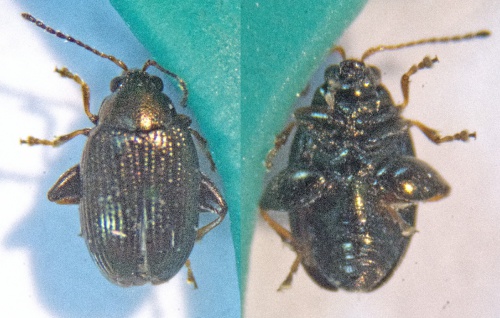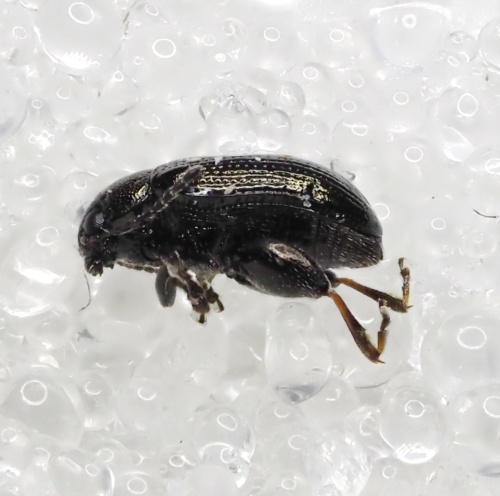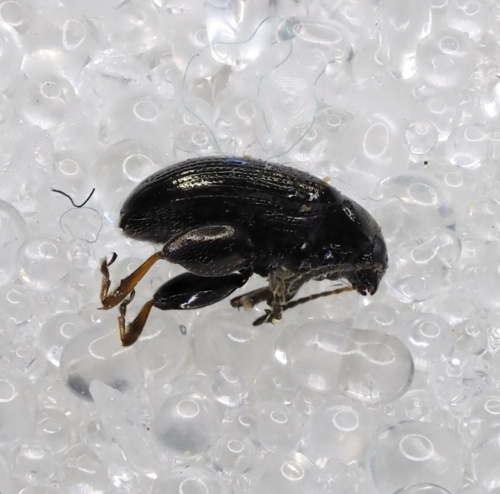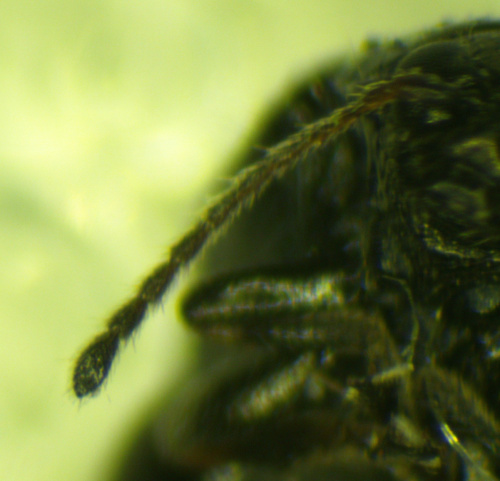Mangold Flea Beetle - Chaetocnema concinna
1.5-2.3 mm. A dark, shiny flea beetle. Bronze, coppery or dark green with elytral punctures in straight rows. The genus has small teeth on each of the mid and hind tibia. See ID checklist below.
C. picipes is the only other species in the genus with elytral punctuation in clear rows. This has the last antennal segment more pointed and narrow and generally symmetrical.
- 1.5-2.3mm
- A tooth on both mid and hind tibia
- Swollen hind femora
- Elytral punctuation in clear rows
- Last antennal segment asymmetrical
- Pronotum with short lateral grooves
Various habitats, sometimes associated with fields of Sugar Beet.
Can be found in most months of the year peaking around April and May.
Feeds on various Polygonaceae (docks, knotweeds) and Chenopodiaceae (Fat-hen, oraches); also Beet, Lesser Periwinkle, Yew and Birches.
Widespread and fairly frequent in Britain
Fairly frequent in Leicestershire and Rutland. There were approximately 100 VC55 records for this species up to March 2015.
Leicestershire & Rutland Map
Enter a town or village to see local records
MAP KEY:
Yellow squares = NBN records (all known data)
Coloured circles = NatureSpot records: 2025+ | 2020-2024 | pre-2020
UK Map
Species profile
- Common names
- Tooth-Legged Flea Beetle, Beet Flea Beetle, Mangold Flea Beetle, Mangel Flea Beetle
- Species group:
- Beetles
- Kingdom:
- Animalia
- Order:
- Coleoptera
- Family:
- Chrysomelidae
- Records on NatureSpot:
- 6
- First record:
- 31/05/1997 (Derek Lott)
- Last record:
- 04/02/2025 (Isabel Raval)
Total records by month
% of records within its species group
10km squares with records
The latest images and records displayed below include those awaiting verification checks so we cannot guarantee that every identification is correct. Once accepted, the record displays a green tick.
In the Latest Records section, click on the header to sort A-Z, and again to sort Z-A. Use the header boxes to filter the list.





